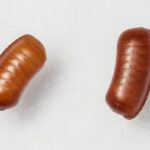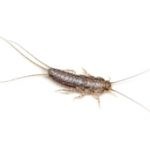How to Get Rid Of Cockroaches in Your Sink and Drains

Cockroaches are known to enter homes through pipes. They often use the drain of your sink as a pathway. Drain roaches are a common in sinks, yet frustrating problem for homeowners. These sink pests can thrive in kitchen and bathroom drains, crawling up from sewer pipes, plumbing systems, and even garbage disposals.
If you’re finding cockroaches coming from your drains, it’s crucial to understand why they’re there, how to stop them, and the best way to clean sink pipes to keep cockroaches away. So, in this guide, we’ll show you stop cockroaches from coming up the sink drain and prevent sewer cockroaches in the kitchen.
Do Cockroaches Live in Drains
It is common for cockroaches to live in drains of bathrooms and kitchens, where they have access to water. Despite being able to survive for up to a month without food, they can only last 7 days without water, so you are more likely to see roaches near water sources, such as your kitchen sink or bathtub.
Drains provide the perfect habitat for cockroaches because they offer moisture, food residue, and shelter. The most common type found in sink and sewer drains is the American cockroach, often called a “sewer roach.”
Apart from being unpleasant, cockroaches carry germs, bacteria, and allergens with them when they finally get into your home. So preventing them from entering is a crucial part of a healthy environment.
Just like rats and mice, cockroaches can squeeze through the tiniest cracks, all thanks to their amazing exoskeletons. In addition, they can spread their legs out to the side, which means they can flatten their bodies if necessary.
Can Cockroaches Swim
Cockroaches cannot swim in the traditional sense, but they are incredibly resilient in water. They can survive being under water for extended periods, meaning that simply flushing them down the drain won’t kill them – they can crawl back up or escape elsewhere in the plumbing system.
Why Did a Roach Come Out of My Sink?
It is possible that roaches lived in your house before you moved in. They may have hitched a ride from your previous home to this one or entered your house from your neighbours’.
If you’ve seen a cockroach crawl out of your sink, it likely means there is a breeding population in your drains or nearby sewer lines. Cockroaches use plumbing systems as hidden pathways to travel between homes, especially in apartment buildings or older houses with aging pipes.
Stay calm! Finding cockroaches in the kitchen or bathroom is not at all a reflection of your house-cleaning abilities, since they can get in no matter what you do. These sink bugs are very sneaky and great at hiding, so unless you spend a lot of time up and about your home late at night, you may not notice them until you randomly see one or two scuttling around on the floor.
How to Get Rid of Sewer Cockroaches
To get rid of cockroaches in sink and drains you have to deep clean your drains with:
- A mixture of baking soda and vinegar to dissolve grime. You can also use enzyme-based drain cleaners to break down organic matter;
- A gel bait will kill a sewer roach colony. Use roach gel bait or foaming insecticide specifically designed for sinks and drains. Standard sprays may not reach hidden roaches inside pipes;
- Use cockroach drain covers. A cockroach-proof drain cover prevents these pests from entering your sink. It is best to use metal or silicone drain covers;
- Check for cracks in plumbing and use silicone caulk to seal gaps and place glue traps around will help you find their entry point;
- Cover any unused drain openings with a plug or stopper at night.
Sink and drain cockroaches are a serious problem that must be addressed immediately. To stop roaches from coming up the drain, you must clean, seal, and maintain kitchen drains to repel sink bugs.
Hire a pest control service for cockroaches in drains
Local pest control for cockroaches in plumbing
Does Pouring Boiling Water Down the Drain Kill Roaches
Pouring boiling water down the drain can kill some cockroaches, but it is not a long-term solution. Boiling water kills cockroaches on direct contact, but does not eliminate eggs or hidden nests. Additionally, hot water won’t stop cockroaches from coming back if the drain is not cleaned and sealed.
To effectively eliminate drain cockroaches, you need a comprehensive approach that includes proper drain cleaning to remove organic matter and sealing drain openings to prevent roach entry.
Does Pouring Bleach Down the Drain Get Rid of Roaches
Pouring bleach down the drain may kill some cockroaches on contact, but it is not an effective long-term solution for eliminating an infestation. While bleach is a strong disinfectant and
Does Vinegar Kill Cockroaches in Drains
Vinegar will not kill cockroaches in drains. While it is a natural cleaning agent with antibacterial properties, it is not strong enough to eliminate roaches or their eggs. However, vinegar can still be useful in cockroach prevention by helping to clean drains and remove food residue that attracts roaches. It will also eliminate odours that may attract other sink pests.
How to Prevent Sewer Cockroaches in Drains and Sink
- Seal any cracks or holes in your drain pipes. Use a flashlight to inspect and seal all possible entry points with caulk;
- Find any gaps around the pipes under your sink and fill them with silicone or urethane foam. Fill larger holes with steel wool or copper mesh before sealing them. The same applies if you are dealing with a rodent infestation;
- Ensure that your faucets are not leaking. Standing water attracts many household pests like cockroaches, flies and ants. Fill the crevices and holes around drain pipes with caulking, plaster, or cement;
- When you remove the roaches’ water source, they will go somewhere else for water. Condensation-prone pipes should be protected with insulation foam and tape.
- Cockroaches cannot swim, so installing trap primers is another way to stop them from crawling up to the drain. Plumbing professionals can install one at every water supply source. The primer detects when there’s no water in the trap. The device then releases a small amount of water to refill it. This method is great for dealing with cockroach infestations in commercial buildings;
- You can set up a liquid trap seal primer as a DIY solution. You can purchase this at any hardware store. This will prevent your drains and pipes from drying out. In some cases, you may be able to deter roaches for 3 to 6 months;
A combination of proper drain cleaning, sealing, and targeted pest control methods is far more effective for eliminating cockroaches in sink and drains permanently.
Natural Ways to Keep Cockroaches Out of Sink Pipes and Drains
You can prevent cockroaches from entering your sink pipes and drains without using harsh chemicals. There are two non-toxic, easy-to-use options for those who prefer to use natural products:
Borax
The mineral borax, scientifically known as sodium borate, is found in locations where seasonal lakes have dried up. It is most commonly found in household cleaning powders, as well as some laundry detergents and cosmetics.Borax is only effective against cockroaches if they consume it.
This substance sticks to cockroach legs via static electricity- just like when you rub a balloon on your head. Later, the cockroach will ingest the powder to clean itself once it is back in its hiding place. Once the powder is in its stomach, the substance acts as a poison.
Additionally, it damages a cockroach’s exoskeleton. A roach won’t die instantly if it walks through borax. Instead, it’ll go back to its hiding place and eat any borax dust it picked up. You might not notice the bugs’ deaths at first, but you should see them drop in numbers in two weeks.
Although both products are natural, they are also irritating and should not be inhaled. This mixture should not be used around children, pets and food preparation areas.
Diatomaceous Earth
Diatomaceous earth is a fine powder made by grinding up the fossilized shells of tiny ocean animals. It is similar to sand, but more finely ground and composed of only one material. Despite being non-toxic to pets and humans, diatomaceous earth kills insects by destroying their exoskeletons.
DE dissolves the hard wax coating on cockroaches’ exoskeletons, leading to their dehydration. It gets stuck to their legs and they ingest some of it. They usually die of dehydration a short time later after returning to their nest.
Apply the diatomaceous earth in cracks, outlets, and gaps. A common place for roaches to lurk is around wiring, too. You’d be surprised at the variety of places roaches can appear. The powder’s versatility is one of its strengths: it can be sprinkled or sprayed behind appliances, under furniture, or even outside! If you have a larger infestation, it will take more time to eliminate. Be sure to reapply!
Baking Soda
Baking soda and vinegar can be used together to clean drains naturally. Pour 1/4 cup baking soda down the drain and follow it with 1/2 cup vinegar. The chemical reactions between these two ingredients should be enough to get rid of any waste in the drain. Wait for a couple of minutes and then pour boiling water down the drain.
In addition, you should also know that baking soda’s pH balance will remove odours. As cockroaches are attracted to drains by the scents that linger in them, this is an essential feature to consider.
Hire a Pest Control Service for Cockroaches in Drains
Cockroaches reproduce so rapidly that even if a few eggs survive, their numbers will quickly increase. Kindness has no place here. Cockroaches must be dealt with as soon as possible.
Sewer roaches in your sink or drain indicates a deeper infestation inside the plumbing system. For cockroaches in drains in your kitchen or bathroom, hire a pest control service. Consult a licensed cockroach exterminator if you worried about pipe roaches and kitchen drain infestation.
Consider that we give an information on possible ways to get rid of cockroaches. However, we cannot declare that all of the above approaches will work for you.














